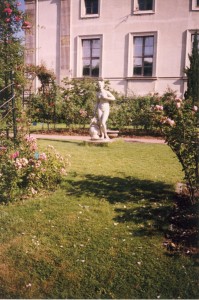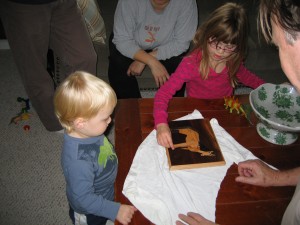February 24, 2012
 …thanks to my sister, Tammy, for sending the message that it at the end of the post in an email to me. It led me to do some background research and learn more about thyroid cancer and exposure to x-rays.
…thanks to my sister, Tammy, for sending the message that it at the end of the post in an email to me. It led me to do some background research and learn more about thyroid cancer and exposure to x-rays.
In a nutshell, the use of a shield from x-rays during dental x-ray exams is recommended. Use of a shield when getting a mammogram is more contested.
Concerns about the number of cases of thyroid cancer has led to some debate. In the links I include here, some say that the increase in the number of cases can be explained by better screening efforts and technology. In other words, there were always as many cases, but now we diagnose them more often.
There are efforts to explain this, including the possibility of exposure to x-rays during dental exams and mammograms. Others are looking for possible reasons that the number of cases may be on the rise.
Regarding dental x-rays and thyroid cancer, here is an excerpt from a summary*: “Dental X-rays give a very low dose of radiation to the mouth. There is some scatter of radiation and the potential for some radiation absorption by the nearby thyroid and other organs. The American Dental Association notes that a leaded apron placed over the torso minimizes radiation exposure to the chest and abdomen and should be used when any dental X-ray is taken. The group also notes that a leaded thyroid collar can protect the thyroid from radiation and should be used whenever possible.”
*: Go to http://www.cnn.com/2011/
and enter after the slash: HEALTH/expert.q.a/03/30/thyroid.cancer.radiation.brawley/index.html
Dr. Oz has had conversations about this on his show [see here for a discussion across time: http://www.radiologytoday.net/archive/rt0611p18.shtml].
Some of the content in the link includes:
“Statistics cited in the ACR/SBI press release show that for annual screening mammography for women aged 40 through 80, the cancer risk from the amount of radiation scattered to the thyroid during a mammogram is “incredibly small,” measured at less than one in 17.1 million women screened. They stress that this “minute” risk of thyroid cancer be balanced with the fact that using a thyroid shield could impact the quality of the mammography image, interfere with the diagnosis, and ultimately result in the need for a second mammogram.
“As we told Dr. Oz, it was not just the fact that a thyroid guard was unnecessary and could compromise the mammogram, the concern is that misinformation over inconsequential issues will discourage women from participating in screening and its potential to save lives,” Kopans says.”
So it appears to be about ‘tradeoffs’ as is so often the case with health risk. In my book taking about health, the chapter titled ”How normal am I?’ encourages us to keep track of our own pesonal helth history and our family’s health history, together with environmental exposures so that we can form a better sense of the meaning of ‘normal’ for ourselves. Perhaps someone with a personal history or family history or higher risk for thyroid cancer would want to adopt this extra protection during a mammogram.
The note from my sister that began this exploration….
Thyroid cancer
On Wednesday, Dr. Oz had a show on the fastest growing cancer in women,
thyroid cancer. It was a very interesting program and he mentioned that
the increase could possibly be related to the use of dental x-rays and
mammograms. He demonstrated that on the apron the dentist puts on you for
your dental x-rays there is a little flap that can be lifted up and wrapped
around your neck. Many dentists don’t bother to use it. Also, there is
something called a “thyroid guard” for use during mammograms.
By coincidence, I had my yearly mammogram yesterday. I felt a little
silly, but I asked about the guard and sure enough, the technician had one
in a drawer. I asked why it wasn’t routinely used. Answer: “I don’t know.
You have to ask for it.” Well, if I hadn’t seen the show, how would I have
known to ask?




